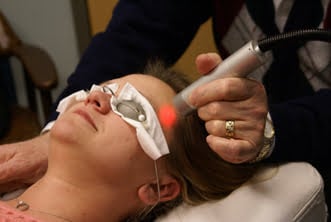A longitudinal study has revealed near-infrared light to be an effective treatment for traumatic brain injury, a condition which brings over 2.5 million individuals to the emergency room each year.
Carried out from 2011 to 2013, the study involved 10 people suffering mild to moderate traumatic brain injury (TBI). Over the course of two months, each patient received 10 transcranial applications of high-power, pulsed near-infrared (NIR) light lasting less than 60 minutes each. NIR light treatment re-energizes damaged or dormant brain cells.
Unlike previous studies using continuous, low-power NIR or diode-based IR light, this study used a Class 4 laser to deliver 810- and 980-nm pulsed NIR at 10 to 15 W. According to study coauthor Dr. Theodore Henderson of the Neuro-Laser Foundation, “LED and low-level NIR offer at best transient benefit, and often do not even penetrate through the skin.”

Near-infrared light has been shown to be an effective treatment for traumatic brain injury. Courtesy of the Neuro-Laser Foundation.
The deeper penetration provided by high-power NIR — at least 3 cm into the brain — produced in patients “a significant reduction of their depressive symptoms as demonstrated using standardized depression scales,” Henderson said.
No negative side effects were reported. Significantly, the researchers reported the benefits lasting for up to four years after treatment.
Symptoms of persistent TBI may include headaches, speech irregularities, confusion, memory slips, lack of impulse control, sleep disturbance, anxiety, depression and, for some, suicide. The condition commonly affects athletes and military veterans.
Previous studies have revealed the most common areas of human brain injury are the bottoms of the frontal and temporal lobes, which can be 3 to 7 cm from the scalp.
The work was published in Neuropsychiatric Disease and Treatment (doi: 10.2147/ndt.S65809).